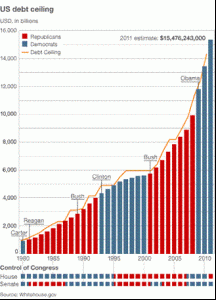Why does the UK Government have such low interest rates on its debt?
Like the US the UK is facing low interest rates, despite having a high budget deficit and public debt. Why is this?
The UK Government issues its debt in the form of Guilts, currently the interest rate the government has to pay on a year guilt is 0.32%. This is lower even than the base rate, surely investors would be better off just putting their money in a bank account? Well to start with large financial institutions and investors can’t simply put all their money in a bank account, if the bank collapses they will loose all their money (and the government only insures £85,000). [...]
